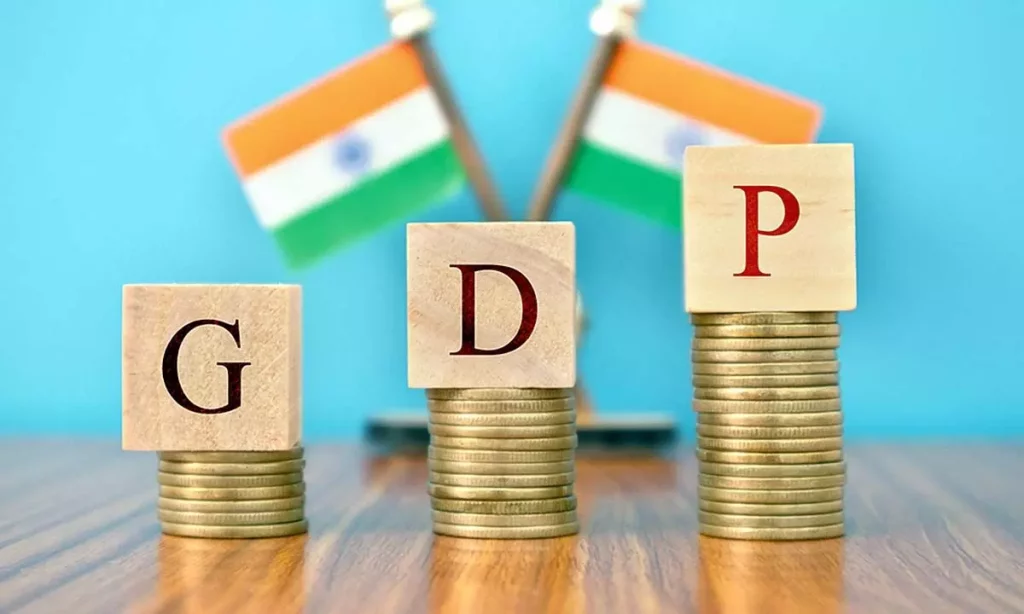Introduction: India’s Economic Boom
India, long considered a developing nation, is now emerging as one of the most exciting investment destinations in the world. Over the last few years, the country has experienced a period of remarkable economic growth, fueled by a burgeoning middle class, rapid technological advancement, and strong governmental reforms. As the world’s most populous country and one of its largest economies, India offers investors a host of opportunities across multiple sectors, from technology and pharmaceuticals to infrastructure and consumer goods.
In this article, we will explore the recent developments that have fueled India’s market growth, delve into the investment opportunities in this booming economy, and offer strategic tips on how to invest wisely in India’s ever-evolving market landscape.
Recent Developments Fueling India’s Market Growth
1. Robust Economic Growth
India’s GDP has shown remarkable resilience, growing at a healthy pace even amid global uncertainties. In 2025, the country is projected to maintain a growth rate that outpaces many other major economies. Driven by a combination of strong domestic consumption, robust exports, and a rapidly growing services sector, India is positioning itself as an engine of global economic expansion.
India’s growth story is powered by structural reforms, such as the Goods and Services Tax (GST), banking sector reforms, and efforts to improve infrastructure. These changes have made doing business in India easier and more attractive to both domestic and foreign investors.
2. A Thriving Tech and Startup Ecosystem
India has become a global hub for technology innovation and entrepreneurship. With one of the largest pools of tech talent in the world, the country is seeing a boom in startups and venture capital investments. The Indian startup ecosystem has produced some of the world’s most successful companies in recent years, including Flipkart, Ola, and Byju’s.
Moreover, India’s emphasis on digitization and technological infrastructure has laid the foundation for future growth in sectors such as artificial intelligence (AI), e-commerce, and fintech. The Indian government’s Digital India initiative is helping businesses and consumers alike leverage technology to drive economic expansion.
3. Demographic Advantage: A Young Workforce
India’s population is both large and young, providing a demographic dividend that is expected to fuel economic growth for decades. With a median age of around 28 years, India’s workforce is young, tech-savvy, and increasingly well-educated, making it an attractive destination for businesses seeking skilled labor at competitive costs.
This demographic trend is particularly favorable for industries that require a large workforce, such as consumer goods, manufacturing, and services. As India’s middle class expands, demand for a wide range of goods and services will continue to grow, providing companies with significant growth opportunities.
4. Governmental Reforms and Infrastructure Investments
The Indian government has undertaken several initiatives aimed at improving the country’s infrastructure, making it easier for businesses to operate and invest. These include investments in smart cities, transportation networks, and renewable energy projects.
Moreover, India’s government has pushed for regulatory reforms that make the business environment more favorable to foreign direct investment (FDI). Policies such as Make in India, Atmanirbhar Bharat (Self-reliant India), and National Infrastructure Pipeline (NIP) are designed to promote both domestic manufacturing and foreign investment, offering a pathway for companies looking to capitalize on India’s growth potential.
5. Sectoral Shifts and Green Economy Initiatives
India is also focusing on sustainability and the green economy as part of its long-term growth strategy. The country has committed to achieving net-zero emissions by 2070 and is investing heavily in renewable energy, including solar power and wind energy. This has opened up investment opportunities in the green tech and sustainable infrastructure sectors.
India’s energy sector, traditionally reliant on coal, is shifting toward cleaner energy sources, and the government has set ambitious targets to increase the share of renewables in the country’s energy mix. As a result, the clean energy sector is emerging as one of the most promising investment opportunities for 2025 and beyond.
How to Invest Smartly in This Booming Economy
1. Focus on Key Growth Sectors
To capitalize on India’s growth potential, investors need to focus on sectors that are poised for rapid expansion. The following sectors offer promising opportunities:
a. Technology and Fintech
India’s technology sector is booming, with companies in software development, e-commerce, artificial intelligence (AI), and fintech leading the charge. The country has one of the world’s largest tech ecosystems, with companies like Tata Consultancy Services (TCS), Infosys, and Wipro continuing to perform strongly on global markets. The fintech sector, in particular, is growing at an exponential rate, driven by the widespread adoption of digital payments and mobile banking.
Investors can look at both large-cap technology stocks as well as emerging fintech startups for potential growth.

b. Pharmaceuticals and Healthcare
India is known as the pharmacy of the world, being one of the largest producers of generic medicines. The pharmaceuticals sector has benefited from both domestic consumption and exports, particularly in emerging markets.
Additionally, India’s healthcare sector is experiencing strong growth, driven by increased demand for health insurance, medical infrastructure, and biotech innovation. Companies in these areas, such as Dr. Reddy’s Laboratories, Sun Pharma, and Biocon, are well-positioned to benefit from the growing demand for healthcare services.
c. Renewable Energy
As mentioned earlier, India’s shift to renewable energy presents significant opportunities for investment. With the government’s commitment to solar power and wind energy, as well as the rapid development of electric vehicles (EVs), this sector offers long-term growth potential. Companies involved in solar panel manufacturing, EV infrastructure, and green energy generation are set to benefit from these structural changes.
d. Consumer Goods and E-Commerce
With a growing middle class and increasing disposable income, India’s consumer goods sector is ripe for investment. Companies in retail, consumer staples, and fast-moving consumer goods (FMCG) are benefiting from the rise in consumer spending. Brands like Hindustan Unilever, Nestlé India, and ITC are well-positioned to benefit from this growing market.
The rise of e-commerce giants such as Flipkart and Amazon India is also driving the retail revolution, creating new opportunities in online retail and logistics.
e. Infrastructure and Real Estate
India’s push for large-scale infrastructure projects, including new smart cities, roads, airports, and seaports, presents a wealth of opportunities in construction and real estate development. Investors can look into real estate investment trusts (REITs) or infrastructure-focused stocks to capitalize on this sector’s growth.
2. Consider Local ETFs and Mutual Funds
For those seeking a diversified approach to investing in India’s booming market, Exchange-Traded Funds (ETFs) and mutual funds focused on Indian stocks are an excellent option. These investment vehicles provide exposure to a broad basket of stocks across various sectors, which helps mitigate risk while capturing the upside of India’s economic growth.
Funds such as Nifty 50 ETFs or India-focused emerging market funds allow investors to participate in the performance of India’s top companies without having to pick individual stocks.
3. Leverage the Power of Demographics
India’s young population is its biggest asset, and investors should focus on sectors that cater to this demographic. These include technology, e-commerce, education, and consumer goods. The growing demand for smartphones, online education platforms, and affordable financial services offers ample opportunities for companies catering to India’s tech-savvy youth.
4. Stay Ahead of Regulatory Changes
The Indian government has implemented several reforms to improve the business environment. It is essential for investors to stay informed about regulatory changes and policy shifts that could impact the market. For instance, the National Monetization Pipeline and FDI reforms provide additional avenues for growth, particularly in infrastructure and manufacturing.
5. Monitor Currency Movements and Inflation
While India presents tremendous opportunities, investors should also be aware of the risks. Currency fluctuations and inflationary pressures can impact returns, especially for foreign investors. Monitoring the Indian rupee and economic indicators is crucial for managing potential risks in your portfolio.
Conclusion: Investing in India’s Future
India’s growth story is one of the most compelling narratives in the global economy today. With a young population, an expanding middle class, and a government committed to structural reforms, the country offers investors unparalleled opportunities across a wide range of sectors.
By focusing on key sectors such as technology, renewable energy, consumer goods, and pharmaceuticals, and using investment vehicles like ETFs and mutual funds, investors can tap into India’s booming economy while managing risk effectively. As India continues to rise on the global stage, now is the time to explore the potential rewards this dynamic market offers.













































